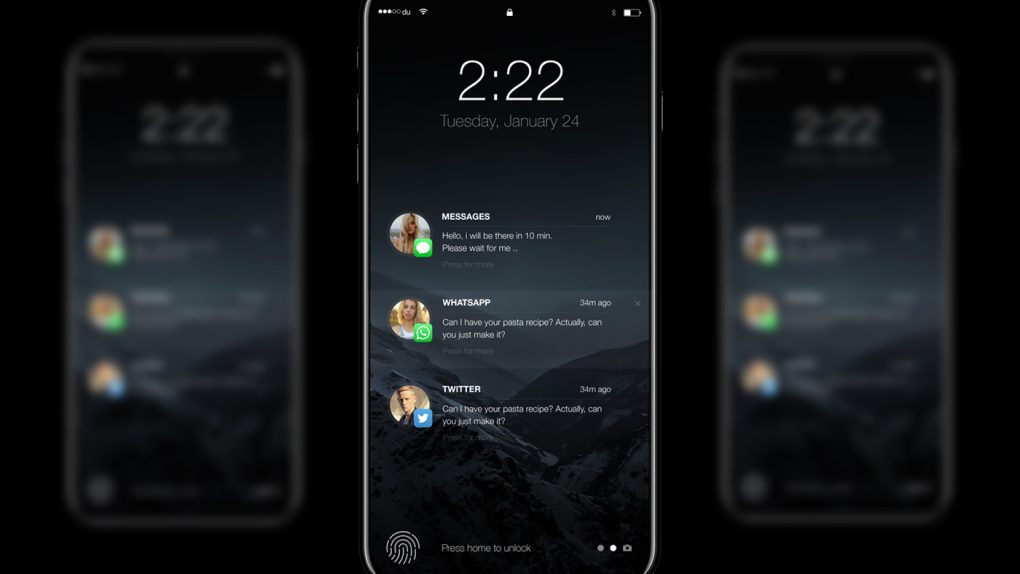To date, the iPhone 6 is still responsible for the biggest iPhone upgrade cycle in history. And with good reason, the iPhone 6 marked the first time Apple delved into the world of larger-screened iPhones, at long last giving users with a preference for larger screens a compelling reason to upgrade. What’s more, Apple in 2014 didn’t just release one new device; rather, it released two distinct iPhone models, the 4.7-inch iPhone 6 and the gargantuan 5.5-inch iPhone 6 Plus.
Looking ahead to Apple’s 2017 phone lineup, there’s a very good chance that the upgrade cycle Apple enjoyed in 2014 will not only be matched, but may very well be surpassed later this year once Apple rolls out the highly anticipated iPhone 8.
In many ways, Apple’s iPhone 8 — which may very well be called the iPhone Edition — is the iPhone that we’ve all been waiting for. Not only will Apple’s next-gen iPhone introduce a brand new design, there’s mounting evidence that the iPhone 8’s form factor will mark the biggest design shift we’ve ever seen across successive iPhone models. According to a number of credible sources, Apple’s flagship 2017 iPhone will incorporate a curved OLED display with minimal bezels on both the top and bottom of the device. In turn, the iPhone 8 will likely feature an iPhone 7 Plus sized screen in an iPhone 7 sized form factor.
Additionally, we’ve seen reports that Apple’s OLED-based iPhone will finally include a feature iPhone owners have been demanding for years — much improved battery life. This shouldn’t come as too much of a surprise given that OLED displays are notoriously much more power efficient than their LCD counterparts. Further, reputed Apple analyst Ming-Chi Kuo believes Apple will utilize a stacked logic board design on the iPhone 8 that will result in improved battery performance across the board.
“Thanks to stacked SLP,” Kuo wrote last month, “we expect the OLED iPhone to have similar dimensions to a 4.7” TFT-LCD iPhone, and have comparable battery capacity (equipped with around 2,700 mAh L-shaped 2-cell battery pack) to a 5.5” TFT-LCD iPhone.”
As a quick point of reference, battery life on Apple’s 5.5-inch iPhone 7 Plus can handle 21 hours of talk time, 15 hours of Wi-Fi browsing, 14 hours of video playback, and a staggering 60 hours of audio playback.
While these two items alone — a new form factor and improved battery life — would certainly be enough to generate unprecedented demand, Apple may have a few more tricks up its sleeve to further strengthen interest in the device. According to various rumblings from the rumor mill, the iPhone 8 will also feature wireless charging, enhanced Siri functionality, and perhaps some new augmented reality and facial recognition features.
Taking all of the above into consideration, it’s no surprise that analysts are extremely optimistic about the upcoming iPhone upgrade cycle relative to what we’ve seen over the past two years with the iPhone 6s and iPhone 7.
BMO Capital Markets analyst Tim Long, for example, said the following in a research note obtained by MacRumors:
For the 2017 iPhone refresh, we expect some cannibalization by the premium model. While we expect like-for-like units to be 23 million lower, we model 34 million of unit volume from the new model. On balance, we estimate 11 million of incremental volume, the best launch since iPhone 6, though still less impactful. We believe this reflects conservatism in our estimates.
Meanwhile, analysts at Citi recently said that Apple’s upcoming iPhone will usher in a “super cycle” upgrade that will propel shares of the company to new all-time highs.
Rounding out the trifecta, analysts Jeffrey Kvaal and Gregory McNiff earlier this year issued a research note claiming that Apple will sell at least 80 million iPhones during the company’s 2017 holiday quarter, eclipsing the current record of 78 million set just a few months ago. Aside from the slew of new features mentioned above, Kvall and McNiff astutely point out that the installed base of iOS users is anywhere from 45-50% bigger than it was when the iPhone 6 launched.
One thing is for sure: the iPhone isn’t going anywhere. In the wake of declining iPhone sales the past few quarters, armchair pundits and analysts were laughably quick to proclaim that Apple’s iconic smartphone had peaked, with nowhere to go but down. During the 2016 holiday quarter, however, Apple set a new quarterly iPhone sales record, a feat made all the more impressive given the deluge of comments painting the iPhone 7 as a boring device. If the iPhone 7 was able to set a new quarterly sales record, just imagine what the completely redesigned iPhone 8 will do once it hits store shelves.








